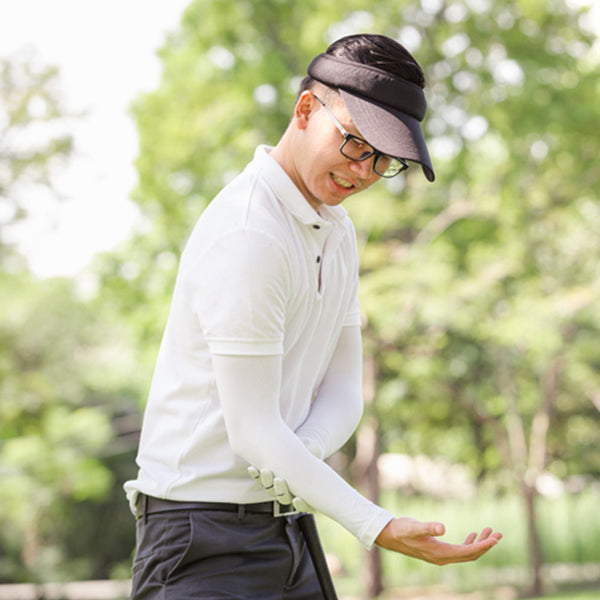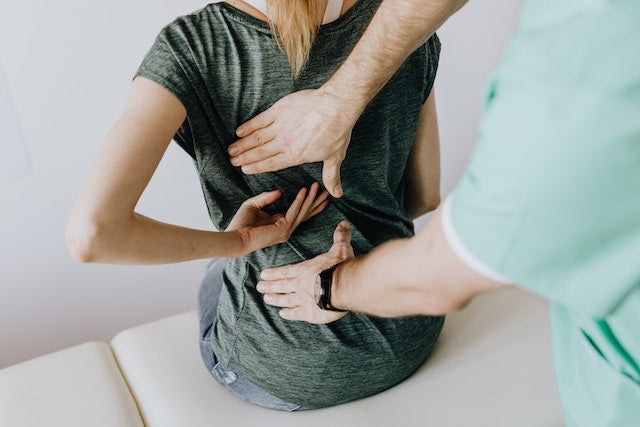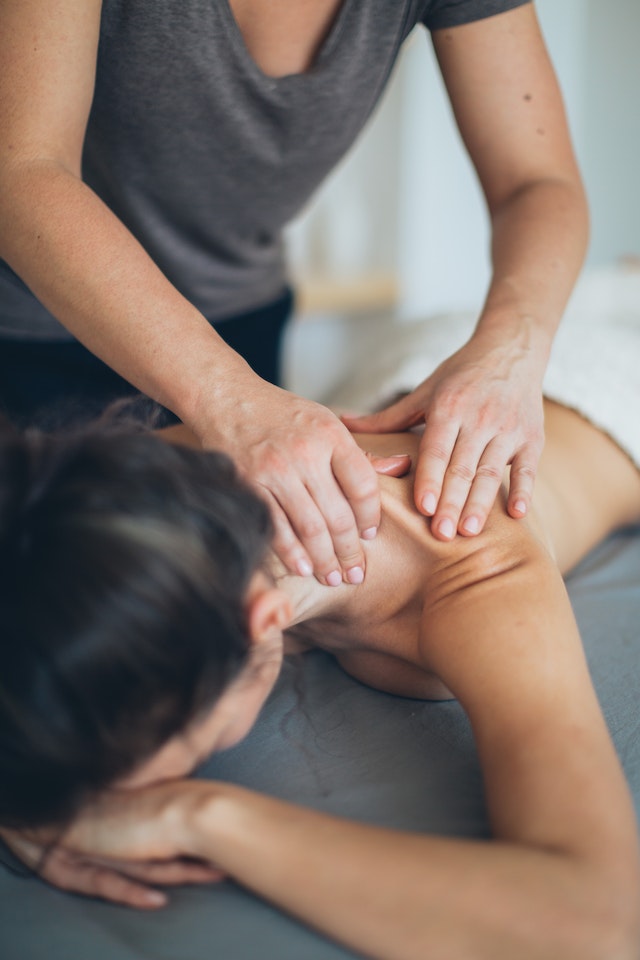Looking for ways to fix golfer's elbow and get fast relief?
Golfer's elbow is a common condition that presents a lot of pain, stiffness, and soreness.
Also known as medial epicondylitis, this condition occurs when the tendons of the forearm muscles become inflamed or damaged due to excessive use.
While you may assume that a golfer's elbow is exclusive to golfers, it can also affect athletes and other people who engage in activities that require a lot of hand use.
If you or anyone you know is suffering from a golfer's elbow, you'll be happy to know that there are a few simple yet effective ways to fix it.
In this article, we'll review some remedies that can help you get fast relief.
Understanding Golfer's Elbow
Having complete knowledge of golfer's elbow is the first step to finding an effective treatment.
How does it feel? Are there any specific signs and symptoms to look out for?
Before we answer these questions, let's look in depth at what golfer's elbow is all about.
Imagine a tendon in your arm that looks like a rubber band. If you pull the rubber band too much, it will eventually break and cause pain. That's precisely what happens with golfer's elbow.
With this condition, carrying out your everyday activities is challenging because of the pain and stiffness. Golfer's elbow's pain comes with
Common causes of golfer's elbow include several factors we'll explore in the next section.

Causes of golfer's elbow
From overuse of muscles in the forearm and wrist to improper posture, several factors can lead to a golfer's elbow. Some of the most common causes include:
Repetitive motions such as swinging a golf club, throwing a ball, or typing on the computer for extended periods
One of the leading causes of golfer's elbow is the repetitive motion of swinging a golf club or racket back and forth. The constant use of these motions can cause the muscles and tendons to become overworked and inflamed.
With overworked muscles and tendons, performing activities can become complex and painful. Aches in elbows are usually felt on the inner side of the elbow, near where your forearm meets your arm.
Poor technique when doing exercises
How you perform your exercises can play a significant role in developing golfer's elbow.
If you're using poor technique, you can put too much stress on the muscles and tendons of your forearm, leading to injury and pain.
For instance, when performing bicep curls with a dumbbell, keep your elbows close to your body so that you don't put too much strain on your forearms. This way, you can prevent golfer's elbow from occurring in the first place.
Weakness in the muscles and tendons of the arm and forearm
Another factor that can lead to golfer's elbow is when your muscles and tendons become weak or tired.
When these bodily tissues become weak, they won't be able to handle the strain of repetitive activities such as swinging a golf club or tennis racket. Pain and inflammation will eventually occur as a result.
Weakness in these muscles can be caused by various factors, such as age, lack of use, or even genetics.
Wearing tight clothing or accessories that restrict movement of the arm or wrist
Are you fond of wearing tight-fitting clothes or accessories? If so, you may unknowingly increase your risk of developing golfer's elbow.
Tight clothing or accessories can restrict the movement of your arm and wrist, leading to excessive strain on the muscles and tendons of your forearm. When this happens, golfer's elbow can quickly occur.
That's why wearing loose-fitting clothing and accessories is essential when playing sports or doing any physical activity. Now that you know the common causes of golfer's elbow, let's look into what signs to look out for.
Symptoms of golfer's elbow

Dealing with golfer's elbow can be difficult and uncomfortable. Here are some of the signs to look out for if you think you may have this condition:
Pain and tenderness along the inner side of the elbow
When dealing with golfer's elbow, you may experience pain and tenderness along the inner side of the elbow.
This pain can range from mild to severe and is generally felt where your forearm meets your arm. It can be aggravated by activities such as gripping a golf club or even lifting objects with your hands.
You may also experience some numbness or tingling in the affected area.
Weak grip strength in the arm or hand
Another symptom of golfer's elbow is a decrease in grip strength.
This can make it difficult to hold onto items and even perform everyday tasks, such as opening jars or typing on a keyboard.
The weakened grip strength can also be accompanied by pain in the forearm when performing certain activities that require gripping, such as lifting weights or swinging a golf club. If you're experiencing this, taking steps to relieve the pain before resuming any activity is essential.
Radiating pain up to your shoulder or down toward your wrist
Golfer's elbow can also cause radiating pain from your elbow up to your shoulder or down toward your wrist.
This chronic pain is usually caused by inflammation in the surrounding muscles and tendons and compression of nerves in the arm. The radiating pain can be quite severe and can last for days or weeks, depending on the severity of your condition.
Pain when bending or extending the elbow joint
Experiencing pain when bending or extending the elbow joint is another common symptom of a golfer's elbow.
It's usually felt inside the elbow, near where your forearm meets your arm. It can be especially noticeable when you try to bend or extend your arm fully, such as when trying to reach for something high up in a cabinet.
You may also feel discomfort when doing activities involving gripping, such as using a screwdriver or lifting weights.
Swelling or inflammation of the elbow joint
Imagine that you've been dealing with a golfer's elbow for a few days and suddenly notice your arm beginning to swell. This is usually a sign of inflammation in the elbow joint, which can be incredibly painful when touched or moved.
Swinging a golf club can become painful and difficult with swollen or inflamed elbows. You may also experience decreased grip strength and an inability to move the arm.
So, there you have five ways to spot a golfer's elbow. If you're experiencing any of these symptoms, it's essential to take steps to reduce the inflammation quickly and get back on course.
Fortunately, there are many ways to fix golfer's elbow. Let's look at a few of them in the following section.
Ways to Fix Golfer's Elbow
Various treatments are available to fix a golfer's elbow, from taking medications to getting some rest or massage therapy. While the best treatment plan will depend on your condition, here are some popular treatments:
1. Take prescription medications
Taking prescription medications is one of the most common treatments to relieve the pain and inflammation of a golfer's elbow.
These medications range from over-the-counter nonsteroidal anti-inflammatory drugs (NSAIDs) to more powerful prescription drugs like corticosteroids.
Common NSAIDs include ibuprofen, naproxen, and aspirin. Ibuprofen is a popular choice as it works to reduce inflammation and pain.
Naproxen can also be used to relieve elbow pain and swelling, but it has a longer-lasting effect. Aspirin is another popular choice, as it can thin the blood and help reduce inflammation.
2. Get some rest
Getting some rest is essential for allowing your body to fix golfer's elbow.
This includes taking breaks during activities that require gripping, such as golfing or weightlifting. You should also avoid activities that put extra stress on your elbow joint, such as tennis or throwing a ball.
Getting enough sleep at night is also essential, as this allows your body to rest and recover from the day's activities. Aim for 7–9 hours of sleep per night if possible.
3. Apply ice to your elbow
Applying ice to your elbow can help fix golfer's elbow.
For this method, simply apply an ice pack or a bag of frozen vegetables to the affected area for up to 15 minutes. Repeat the process several times a day if needed.
Ice should not be applied directly to the skin, which can cause frostbite. Wrap the ice pack or bag of vegetables in a towel to protect your skin.
4. Perform stretching and strengthening exercises
While it may seem counterintuitive, taking part in stretching and strengthening exercises for golfer's elbow can help provide pain relief.
Stretching exercises can improve the range of motion in the elbow joint, while strengthening exercises can help build muscle around the joint to better support it.
This can reduce pain and improve your ability to do activities that require gripping strength or a full range of motion in the elbow.
Common stretching and strengthening exercises include wrist flexion and extension, elbow flexion, and forearm pronation and supination.
5. Try massage therapy
Going for massage therapy can also be a great way to recover from golfer's elbow.
Massaging the forearm and elbow tendons can help to reduce inflammation, improve range of motion, and alleviate permanent elbow pain.
If you are considering massage as a treatment option, it is essential to consult with a qualified massage therapist who is experienced with golfer's elbow massage. They will be able to create a plan that is tailored to your individual needs.
You can also try self-massage techniques with fitness tools like massage guns. Let's look at how these tools can help you fix golfer's elbow.
Using Massage Guns to Fix Golfer's Elbow

Massage guns have become a popular tool for treating golfer's elbows.
Using percussive therapy, these powerful handheld devices reach deep into the muscle tissues around your elbow to provide relief from tightness and ache in the elbow. They are light and portable, making them easy to use wherever you are.
Let's look into what benefits they provide when dealing with golfer's elbow.
Benefits of massage guns to fix golfer's elbow
Using massage guns to fix a golfer's elbow comes with a wide range of benefits. Some of them include:
Increases circulation and oxygenation of the joint
When dealing with golfer's elbow, increased circulation and oxygenation of the joint can help reduce inflammation and improve recovery time.
Massage guns can help increase blood flow in the affected area by breaking up knots and releasing muscle and elbow tension. Increased blood supply also helps flush away toxins, which can further reduce severe pain and discomfort.
The increased oxygen supply also helps improve range of motion in the elbow joint, allowing for a faster recovery.
Reduces inflammation and pain
Using massage guns to fix golfer's elbow can also help reduce inflammation and pain. Massaging the muscles around the elbow can help break up scar tissue while reducing stiffness and improving range of motion in the joint.
The improved circulation that comes with a massage gun can also help reduce inflammation and relieve pain in the affected area.
Improves range of motion in the elbow joint
If you're dealing with golfer's elbow, you know how difficult it can be to move the elbow joint fully.
Using massage guns to fix golfer's elbow can help to improve your range of motion by loosening tight muscles and breaking up knots.
How does this occur? Well, when you massage the muscles, it helps to increase circulation and oxygenation in the area, which can help to reduce any form of restriction or stiffness in the joint.
With an improved range of motion, carrying out your everyday activities will become a breeze as you'll experience less pain.
Reduces risk of further injury or chronic pain
Did you know that golfer's elbow can become a chronic problem if left untreated?
Using massage guns to fix golfer's elbow can also help to reduce the risk of further injury or chronic pain.
Massage helps to loosen tight muscles, which can help improve overall mobility in the area. This means that you are less likely to suffer from repetitive strain injuries and other forms of chronic pain in the future.
Just imagine how much easier life would be without the constant discomfort of golfer's elbow. Cool, right? That's what using a massage gun to fix golfer's elbow can help you achieve.
Fitness brands like Fusion Recovery offer a powerful range of massage guns designed to relieve any form of muscle tension that comes with golfer's elbow.
These massage guns offer adjustable speed and different attachments to target the affected area. With the Elite and Mini models, you can target your elbow and forearm tendons to reduce inflammation and improve your range of motion.
Let's look at some tips to ensure you get the most out of your massage gun.
Tips for using massage guns to fix golfer's elbow
When using a massage gun to fix golfer's elbow, it is important that you do so correctly. Below are some tips on how to use these devices safely and effectively:
Use the right attachments

The best way to target the affected area is by using the right attachments. Different massage guns come with different attachments, and it is important that you use the right one for your condition.
For instance, if you are dealing with golfer's elbow, you should use a ball-shaped attachment that targets the elbow and forearm tendons. This will help reduce inflammation and improve range of motion in the joint.
The Fusion Recovery Elite and Mini both come with ball-shaped attachments, making them ideal for targeting your elbow. You also get other attachments, such as the bullet, fork, and flat, that can be used to target other areas of the body.
Target areas of tension
When using a massage gun to fix golfer's elbow, it is essential to target the areas of tension.
It is best to start with the area around the elbow joint and work your way outwards towards the forearms. Massage each spot for 2–3 minutes before moving to another site. This will help loosen up any tight muscles or knots causing pain.
Take it slow
How well you use the massage gun to fix golfer's elbow can also depend on how you approach it.
It is best to start with a low speed setting and gradually increase over time as your muscles get used to the pressure. It is also important not to overdo it. If you feel any pain or discomfort, stop immediately and let the area rest for a few minutes before trying again.
Avoid direct contact with bone
While using a massage gun offers excellent benefits in fixing golfer's elbow, it is essential to note that they should not be used directly on bones around the elbow joint.
These highly powered devices can cause damage to your bones if used forcefully or for long periods of time.
Instead, focus on massaging the muscles around the elbow joint. This will help to loosen up the muscles and reduce inflammation. This way, you can get the most out of your massage gun and fix golfer's elbow effectively.
Frequently Asked Questions

Here are some of the most frequently asked questions to help you understand the painful condition and how to prevent it.
How long does it take to fix golfer's elbow?
The length of time it takes to recover from golfer's elbow will depend on the severity of the injury.
Mild cases can often be resolved with rest and over-the-counter pain medications within a few days. In more severe cases, it can take about six weeks for the acute elbow pain and inflammation to subside.
During this time, it is essential to rest and avoid any activities that could further irritate the elbow.
Can I still perform other activities while fixing golfer's elbow?
Yes, it is possible to perform other activities while fixing golfer's elbow.
However, taking a break from any activities that could further aggravate the elbow or worsen the injury is essential. For example, sports such as tennis or golf can increase the risk of further irritation and should be avoided while recovering.
As we've mentioned before, stretching and strengthening the muscles around the elbow joint are essential to help prevent future injuries.
How can I prevent golfer's elbow?
To prevent golfer's elbow, avoiding activities that may irritate the elbow joint is essential.
If you have any reason to perform activities that could aggravate the elbow, make sure to warm up properly and use the proper technique.
Additionally, it is important to stretch and strengthen the muscles around the elbow joint to help prevent future injuries.
How often should I use a massage gun to fix golfer's elbow?
Using a massage gun to fix golfer's elbow requires proper technique and frequency.
It is best to use the massage gun for no more than 10 minutes per session and no more than three times per day. Start with a low-speed setting and gradually increase the intensity as your muscles get used to the pressure.
If you feel any pain or discomfort, stop immediately and let the area rest for a few minutes before trying again.
Conclusion
Golfer's elbow can be challenging to fix due to its recurrent nature. However, following the steps outlined in this article can speed up recovery while reducing any risk of further injury.
Use proper form, wear the correct equipment, and take regular breaks when playing golf or participating in other activities.
Additionally, incorporate strengthening exercises into your routine to reduce the risk of future injury. If you are experiencing pain and inflammation that persists for more than six weeks, seek medical attention.
Now that you know how to prevent and treat golfer's elbow, you can focus on enjoying your daily activities without worrying about the medical condition. Feel free to share this article with anyone you know who might find it helpful.





